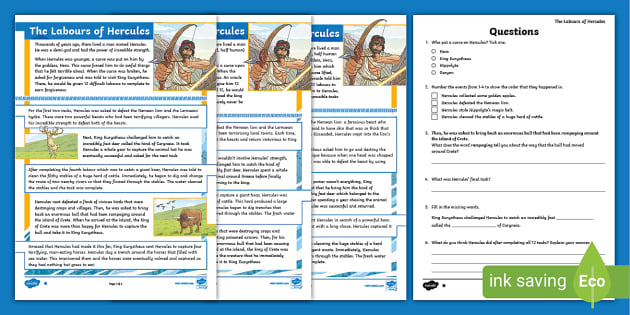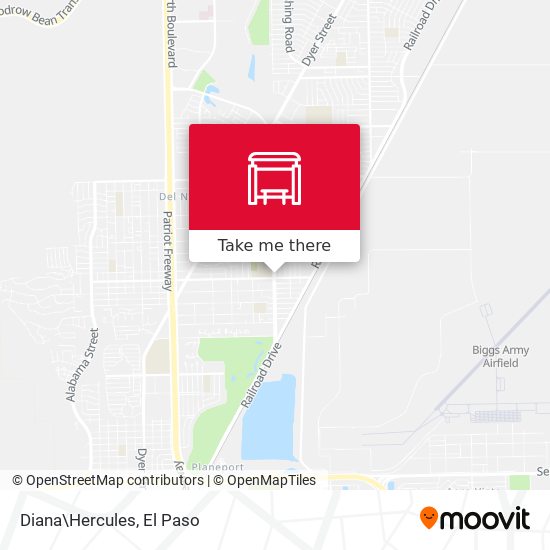Data-Driven Decision Making with Hercules
How Does Hercules Use Data for Planning?
Hercules is all about using numbers to make good plans. We see data as the key to making smart decisions. For example, looking at past sales is crucial to see trends, and how much money we might make in the future. If sales have risen steadily at 5% each year since 2018, that's a good sign for future planning. It tells us the company is likely doing a good job. We can use this trend for making plans about resources and improving the business. We are now more confident about our future predictions. Data like this helps us improve the use of resources, increasing our likelihood of profit.
For instance, a comparison can tell us if things are going well. If Region X's sales are 25% better than Region Y, it helps us figure out why and learn what to copy or avoid doing. Using past information gives us insights that will benefit the business overall. If our strategy continues the upward sales trajectory, we could potentially make significant improvements. It's very useful!
We're careful about using all data correctly, and keeping numbers precise is crucial for planning. Using data this way also ensures that the numbers match real-world situations. Numbers must accurately reflect the company's actions and outcomes. We carefully consider if the data used in each example is relevant, recent, and truthful, making plans more effective and profitable.
What are the Benefits of Data-Driven Decisions?

Source: mickeyblog.com
Using data to decide things helps our planning. We know good plans lead to improvements in our business. One huge benefit is better resource management, meaning we use what we need when we need it. If we can accurately predict trends with data, we can anticipate what our team and the company might need and prepare beforehand, saving time and resources, Using numerical data to predict demand gives our business flexibility to adapt better and more effectively to market situations.
Also, planning with facts improves our company's ability to avoid risks. If we see something coming like an expected industry trend (increase in price, reduced market interest, etc.) with the help of reliable data sources and information we will have time to adjust our strategies to adapt to that expected future problem. Another benefit of data-driven decision making is how it helps our staff or customers to become confident and excited.
Our plans benefit us, and because we use detailed data, customers trust us and support us more. Using data in every part of decision-making leads to better customer service. Data-driven planning benefits customers by giving them a consistently positive experience. Better customer experiences and better outcomes usually boost the company's reputation, resulting in higher overall profit. I am sure that my team will support me to use this tool (Hercules), which will boost sales, marketing efforts, and product success.

Source: co.uk
How to Implement Data-Driven Decision Making?
Implementing data-driven decision-making, like a strategy called "Hercules", involves these steps. First, make sure your numbers are factual and correct! That means gathering the right kind of information. Gathering information can include surveys, asking colleagues or partners, checking public reports or sales reports. It is important to clearly identify each information source. Make sure to always add in what organization made the numbers that you include, like for instance if you used numbers from a specific article you need to credit that source for reference and data reliability.
Next, compare our performance with that of others in the market. How is our work doing in relation to the average? How are similar companies doing in this area? Are our profits increasing, and does the market show any trend? Analyzing information from our past successes can tell us how to succeed in the future as well. Comparing our figures helps identify strengths, such as Region X sales.
Looking at these facts and data also allows us to compare the products sold in the two places to evaluate whether the performance disparities were a coincidence or if they followed a certain pattern or result in one area more than the other. Data like that, when accurately analyzed, can predict success and help our planning process, and also avoid significant mistakes or miscalculations in the future.
Use figures and comparisons to check your performance over time. For instance, consider sales over a year. Make certain the figures show actual outcomes, not estimations. Analyzing data in these kinds of ways helps us make strong and adaptable plans. Lastly, turn data into actionable insights that motivate change and improvement. It's not enough to just know the facts, you have to use the information! For example, data might show higher demand in region Y compared to other regions and in certain customer sectors. Adjust strategies and prices accordingly and see if the actions correlate with the findings. Looking at customer reviews and other feedback about how your product or service is working or how people view the company also can create insights into areas to improve. All these tips create the perfect situation for our business to succeed in the marketplace, building an easy but solid foundation to our long-term goals and creating better performance for every single member of the team.
Understanding Market Dynamics with Hercules
How Does Hercules Analyze Supply and Demand?

Source: apk.live
Hercules uses numbers to understand supply and demand. We look at trends in these things. For example, a 30% increase in demand can mean people want something more. That means it might be time to produce more to sell to people or see if it is a problem.
Supply changes too. If raw materials get more expensive, it makes the product more expensive. The prices that people have to pay have an influence on supply. A simple thing, like materials becoming more expensive, affects how much of a product companies will be willing to make. So prices directly impact the total amount available for people to purchase, which can create or change demand.
Hercules helps by looking closely at these trends and linking the details together, helping us spot chances for profits. By figuring out supply and demand trends and price reactions, the organization is prepared to adjust the production strategy, product sales strategies, and improve marketing plans effectively.
How Can Hercules Identify Market Opportunities?
Analyzing numbers is key to finding good business chances. We see if there’s more demand for something, if supplies are high or low. For example, 30% demand growth suggests customers might be really interested. Hercules also checks existing data to discover market trends that support the business’ future projections for long-term growth, like analyzing historical sales numbers or other performance metrics and also observing similar companies. We are not only considering today’s market; our aim is to gain insights for future predictions, and this process is carried out in various areas and can benefit in many aspects.
With market understanding, Hercules predicts likely success areas, which makes resource management more effective and reduces waste. Also, looking at what similar companies are selling at a reasonable price gives you a sense of how to create better value or sales prices, potentially growing your organization’s customer base, product, or services effectively, creating more profit by carefully calculating market rates of success.
Hercules uses a combination of demand data and information from competitors, considering other business aspects as well like pricing trends in relation to the general industry norms or current marketplace or macroeconomic tendencies. We find patterns for long-term strategies. Comparing our numbers with others is crucial to assess the overall financial impact, market position, and profit projections of Hercules and the overall results in a concise, transparent format.

Source: wishuponmagic.com
What is the Impact of Pricing on Demand?
Pricing is really important for sales. A 5% rise in material costs directly affects product costs, influencing pricing strategies. If something costs more, maybe less people will buy it.
A 5% cost increase suggests businesses may need to either raise the sale price of their product, or create solutions to use less raw materials, reduce overall costs.

Source: media-amazon.com
Looking closely at these costs and matching them to overall profit estimates will aid business planning strategies, helping us avoid significant loss if market strategies are not properly addressed.
Understanding pricing's effects is a way Hercules makes strong business plans and forecasts. Comparing prices helps us adjust our pricing and find the ideal spot that maximizes profit while meeting the customer expectations or needs.
Competitive Analysis with Hercules
How Does Hercules Evaluate the Competitive Landscape?
Hercules looks at the competition to understand our position. We check market share, like how much of the total business Company A has (40%). Comparing our market share (15%) shows where we stand. By looking at market share numbers, it’s easy to quickly evaluate which companies are successful and which are not and which one should be followed closely by competitors and which one does not require such close attention in terms of competitors’ strengths and weaknesses. It helps to understand who's winning, and gives clues to which direction the industry may go next. Knowing what our competition is doing helps predict future situations, such as whether our strategies and services should be modified or enhanced or if they need some minor or major changes
We look closely at our competition and study their business methods, what products they make, and how customers think about their service or offerings. Comparing these elements provides helpful data to understand and to predict industry movements for future growth opportunities. Doing this research provides vital knowledge that will keep the company well prepared.
Our evaluation includes the complete study, covering a holistic view of factors impacting business performances in terms of revenues, profit levels, customer reviews, customer complaints, production rates or any possible operational or infrastructural inefficiencies, etc. Comparing our current revenue results, or how we make profits with industry averages is critical to understand our performance accurately and learn from any potential mistakes and also how to identify patterns, recognize our position or any competitive risks that could affect us or that are similar in our market environment. Looking closely at others allows Hercules to learn good things and learn better from its mistakes to refine its performance standards and keep abreast of possible or inevitable business challenges or adjustments or modifications as we try to maintain competitiveness.
How Does Hercules Identify Competitive Threats?
We check competitors' performance, examining what products or services may give them an advantage, especially new ones, and understand their target customer or their ideal consumer profiles. A 40% market share for Company A might be a competitive threat and that is something we must take into account, whether or not they have any new, emerging product or services. A detailed look is vital as an element for our decision-making strategies and future growth forecasts to understand the competitive dynamics or positioning in order to make necessary adjustments if it's needed or improve existing offerings that may match existing industry averages in this case.
We closely study any trends or innovations to evaluate our future competition. Changes in market strategies, product quality and service, and pricing or new policies need monitoring for accurate assessment and adjustments in case required. Any new service trends or upcoming technologies or emerging challenges or opportunities in this industry, must also be considered as this information allows our organization to have a firm understanding about possible business challenges. This preparation keeps the organization confident and in control about emerging circumstances, minimizing any unwanted disruption in profit maximization strategies for customers and business stakeholders as a result of potential failures.
Knowing our strengths and weaknesses helps in adjusting or refining current strategies for improvement to potentially achieve better revenue growth. By being informed and prepared, Hercules reduces unnecessary risks.

Source: mvtdev.com
What Metrics Does Hercules Use to Track Competitor Performance?
Tracking competitor performance involves studying key data. Market share is a crucial metric. We also look at sales, customer reviews, profits, brand reputation, product success, and service reviews to analyze our competitor's progress compared with our data, and for possible comparisons. These metrics combined will show the full picture and provide insightful information about what our competitor or others in our market space are currently or potentially capable of doing and it reveals possible, unavoidable market challenges that can emerge, creating an environment of careful planning and strategy preparation for potential disruption to minimize and control possible outcomes, including potential revenue loss in any scenario or event.
Knowing competitor performance reveals potential market issues like price drops that might steal customers or unexpected changes in customer demands. Analyzing how this data shifts is also crucial to Hercules' planning and growth forecasting strategies. We look at these areas—how often and consistently products or services maintain value and profit in the market.
Finally, observing trends gives an idea of how fast companies develop, especially those with strong financial backing or new and successful products. Understanding competitor successes can lead to adapting our strategies, potentially learning better product strategies for improvement, potentially allowing Hercules to adapt or expand its existing market presence by acquiring new information to predict market demand, potentially improve offerings to customers and/or adjust our company's business models effectively in our long-term market position. This study assists the organization in its continued development strategies, improving operations, product services and strategies over time.

Source: smushcdn.com
Consumer Insights with Hercules
How Does Hercules Leverage Customer Feedback?
Hercules uses customer feedback to improve. We get information from surveys. Surveys show us important things, like what customers like. Knowing what our customers like lets us build plans that match their wants. For instance, surveys can tell us if a product’s quality needs work. Also, if our customer surveys have feedback like how customers feel the product’s quality or how satisfied are customers, the responses will directly affect and determine how much Hercules will invest in any further quality improvement efforts.
Data is important for deciding our next steps. This data helps decide whether any additional product development is needed in order to gain the desired success metrics for new and existing customers. Collecting details through surveys like convenience being more important to 65% of customers over product price gives Hercules important information, guiding improvements in our company strategy. Using data and observations to decide what actions are helpful or harmful for company growth is beneficial to everyone.
This customer feedback shapes the way we work with the data we get from these analyses and predictions to further understand market positions or areas where growth or product modification can benefit or help improve existing results or possibly new services that we are potentially planning in the future. It all connects—feedback directly changes our plans.
What Methods Does Hercules Use to Gather Consumer Preferences?
Hercules uses surveys to understand what consumers want. These surveys can be online, by phone, or even in person. These methods help us get customer views on their opinions or feedback in various and specific aspects. Gathering data for different sectors of the market and understanding diverse aspects and viewpoints can improve future product strategies and modifications.
A significant method of understanding our consumer market involves surveying current and possible clients to gather direct data from customer experiences with Hercules to evaluate their experiences using questionnaires for customer feedback and customer surveys.
Surveys help by gathering and using numeric data for further analysis or predicting outcomes or even for future investments in product enhancement strategies for improvement to develop and implement solutions. Getting information through feedback helps find trends and patterns, which improve understanding. Looking into possible reasons or explanations for product or services successes or failures allows for predictions and accurate business plans to better guide or predict and control future strategies. The details collected help inform adjustments to create or enhance current plans to help grow a successful customer-oriented organization for further revenue growth and sustainability.
How Does Hercules Convert Customer Data into Actionable Insights?
Hercules turns customer data into usable plans. We take the feedback, like the 65% who prioritize convenience. From this 65% preference, we learn the customer will buy the service if it meets convenience needs more so than product price itself. We can make choices, which include pricing adjustments and adjusting the service quality.
We see which factors affect buying choices and what product characteristics lead to different outcomes or preferences. Customer feedback helps predict whether a possible customer-facing product strategy will potentially work or if possible modifications are required based on various or different feedback opinions, customer suggestions, and potentially new feedback insights. We observe customer habits, how frequently customers need or require our service, or potential adjustments, improvements, or any changes required, in the market segments we operate in. Understanding what customers want gives us a detailed, accurate method that is useful for Hercules' growth in order to succeed in any market, based on different and precise needs of customers in any market sector in the business context. We make improvements based on this data, tailoring offerings to the specific preferences shown by the numeric or numerical customer preferences found through collected surveys and other feedback methods in order to match our ideal customer base’s wants and needs for improvement of company planning and further revenue projections, forecasting strategies and successful market outcomes in our planning cycles.
Measuring Innovation Impact with Hercules
How Does Hercules Analyze Innovation ROI?
Hercules looks closely at the return on investment (ROI) of new ideas. We carefully track how much money we get back for each dollar we spend on new ways of doing things. We look for ways to use fewer resources but still get better outcomes—a common aim for all businesses. An example of this would be AI reducing work steps by 25%, making the entire production process run more efficiently, costing less, and getting more value from the investment in this technology in a measurable way over time, so stakeholders and the management are well informed about overall return.
For instance, we'll look at changes in costs or processes. Did a new tool save us money? Did a new strategy help us serve more customers efficiently or even save costs? Comparing this result with our financial data or possibly past cost estimates helps evaluate the efficiency gains. Analyzing past, present and projected financials and future estimations for the ROI (return on investment) is another measure of possible investment and strategic alignment in our overall operations to gain efficiency and gain cost-effectiveness. The effectiveness of these efforts helps the Hercules team confidently decide how and when to continue or scale new approaches and also how to use these new systems effectively as an ongoing company method to achieve goals.
Analyzing these details tells Hercules the value of every innovation. If something offers high returns for each dollar invested, it could improve our operations substantially, or even more if implemented into various workflows for future adjustments in strategies or in our company structure in general, so we are more efficient over time, maximizing results and overall profitability for business investors and other stakeholders.
What Metrics Does Hercules Track to Measure Innovation Success?
We use specific numbers to track the success of our new ideas. Time saved is important. If something reduces the time it takes to complete a task, that shows it's helpful. A 25% reduction in processing time, for example, means that for every dollar spent we are potentially earning a potentially higher and significant ROI. These improvements demonstrate efficiency. The ROI of such developments is a great indicator and an improvement measurement tool across several different business functions, whether they are client facing services, manufacturing steps, accounting workflows, supply chain process workflows or business communications methods, Hercules finds many aspects and measures these values, generating consistent profits and more streamlined ways of doing business efficiently.
Customer satisfaction and positive customer feedback are also great ways to evaluate results from investments or technology innovations and are further measures for Hercules innovation outcomes that directly improve customers and investor outcomes or satisfaction metrics and ultimately lead to overall company profitability improvement measures, by tracking possible issues early to resolve them quickly and effectively without impacting service availability. Evaluating these aspects over a time period is helpful to us.
We pay attention to improvements across teams or departments (or business units). Is it less time for different teams in order to improve processes or quality management? The numbers will directly help show and assess overall impact and profitability of the investment to determine if it's necessary or appropriate or worthwhile to further implement or utilize these newly developed measures across other functional areas or teams.
What's the Significance of Technological Innovation at Hercules?
Technological innovation is vital to Hercules. It means our services are better, faster, more accurate, or less expensive in operational efficiency ways. Our innovations create measurable results, improving business workflows overall. These are examples of where and why technologies are helpful and cost-efficient in many situations or areas.
Technological progress benefits both consumers and Hercules itself. This leads to long-term improvements and benefits the company's image in terms of profit, success and competitiveness, and brand perception or customer feedback results from this innovative technology use for customer satisfaction as a strategic alignment with business development measures, whether it is client services, business communications or manufacturing procedures. Measuring technological innovation allows Hercules to be more effective. Innovation improvements will affect customer outcomes.

Source: media-amazon.com
By closely measuring the impact, we ensure new technologies improve our work processes. It proves our investment and growth opportunities are substantial or successful, leading to efficiency and profit gains.
Key Takeaways from the Hercules Planning Framework
What are the Core Principles of Hercules Planning?
Hercules planning relies on reliable data. We make sure the numbers are correct. We want the latest information because this helps in forecasting or prediction. For example, steady, upward trends give us confidence. Visualizing data helps see patterns. For example, this can be an upward sales trend. Accurate data sources are very important, helping create stronger, realistic future projections. It helps us understand what might happen in the future more accurately or create well-informed business plans, whether for profit calculations or future strategy developments for long term market position or adjustments.
This helps avoid basing choices only on guesses. This information approach or method creates an insightful business strategy and guides and determines overall long-term and potentially profitable decision-making for any company that uses this method.
Clear communication is also very important. Numbers are good, but clear explanations make things simpler for everyone, and stakeholders better understand results and company strategies and operations.
How Can Businesses Benefit from Hercules?
Using Hercules brings many advantages. Companies gain a clearer view of the market. It gives them tools to find good deals, products, and chances for further profit that benefit different functional departments across the company, maximizing opportunities to improve profitability and achieve sales targets or objectives set for different regions, products, and customers or stakeholders involved in the business functions.
Better decisions and resource planning lead to higher performance. Reduced operational issues can occur if processes are properly streamlined in all functional units of Hercules. Using a measured approach to address issues early on is another benefit. The 25% possible reduction in operational bottlenecks suggests improved processes, freeing up resources for growth. This gives more potential ways of growth opportunities and possible results. Increased profits potentially by 10% means substantial gains. A possible benefit of adopting and incorporating Hercules-style or this structured planning into business decisions may allow organizations to be proactive about resolving foreseeable problems.
Businesses can make the most of Hercules, increasing profits by improving their strategic approaches to problems.
Top 3 Data-Driven Insights for Successful Planning
-
Market trends are crucial. Identify areas where demand is high or supply is limited, whether that means supply issues, quality-of-product issues, customer issues or client concerns to minimize risk or loss of profits by implementing possible solution procedures to minimize financial or customer disruptions or customer loss that affects or might affect profit potential, business or market disruption that might reduce any further profit maximization for stakeholders and/or potential customers.
-
Competitor data matters. Understand where our business fits in compared to competitors, using metrics to analyze pricing and identify areas where we can improve to better forecast profit potentials from the market and identify, assess or prepare our strategies.
-
Customer feedback shapes decisions. Knowing what customers prioritize (such as convenience over price—65% say it’s more important), guides product choices, allowing organizations and teams to make timely changes or improvements, or adapt processes. Understanding preferences helps design offerings for customer success. In short, it improves outcomes by addressing what the customer wants to maximize and utilize those key pieces of information in improving plans to maximize profitability of customer investments, customer feedback, and improving company projections, growth forecasts, and business strategies over time.



